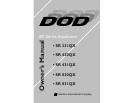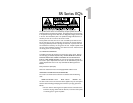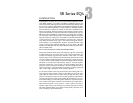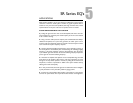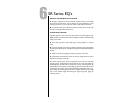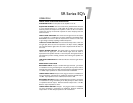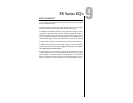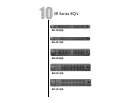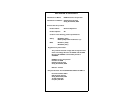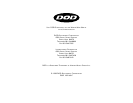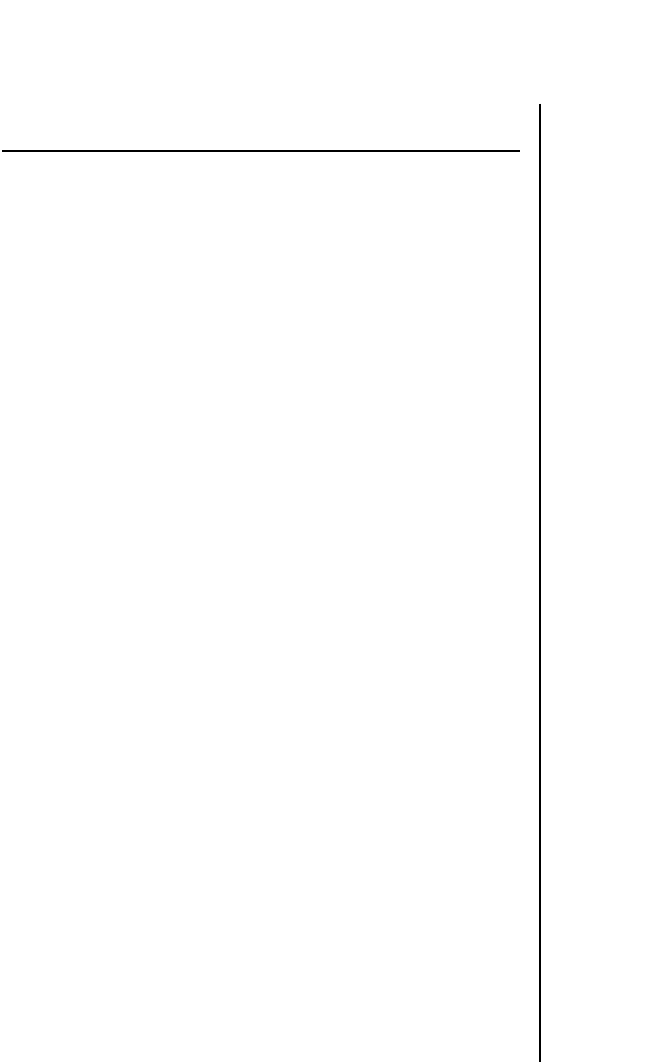
3
SR Series EQ’s
INTRODUCTION
Congratulations,and thank you for your purchase of DOD equalization compo-
nents. DOD equalizers are versatile, cost-effective equalization tools for the
musician,performer,studio engineer,and sound contractor.Each equalizer allows
the user to see a graphic representation of the equalization applied to the audio
spectrum, and offers the flexibility to provide solutions to many EQ problems.
The units offer up to 12 dB of cut or boost per band with a switchable low cut
filter for each channel. Electronic switching of these functions minimizes switch-
ing transients (loud pops or clicks when the switch is depressed),and up to ±12
dB of level control is available to compensate for gain changes due to equaliza-
tion.This feature makes A/B comparisons of the equalized signal to the original
signal quick and easy. Connection to the equalizer may be either balanced with
an XLR connector or with optional unbalanced 1/4" phone plug making the
units readily interfaceable to any system. Dual channel units may be used as a
stereo equalizer or as two independent equalizers. The units offer either 1/3rd
octave or 2/3rds octave resolution, depending on the unit chosen. All DOD
equalizers are solidly built with steel chassis and CSA standard circuit boards for
years of reliable service.
WHY A 1/3RD OCTAVE OR A 2/3RD OCTAVE EQUALIZER?
Most graphic equalizers divide up the audio frequency range into 1/3rd octave
or 2/3rds octave pieces. One octave covers a 2-to-1 range of frequencies. For
example, the frequency range form 50 to 100 Hertz is one octave. The audio
frequency range covers 10 octaves from 20 Hz to 20 kilo (thousand) Hz. If each
of the ten octaves is divided into thirds,you get 30 pieces,or bands, of frequen-
cy. (The 31 bands on DOD equalizers result from including both 20 Hz and 20
kHz bands on the ends of the audio frequency range). A 1/3 octave equalizer
means that 3 bands span 1 octave, while a 2/3 octave equalizer means that 3
bands span 2 octaves. Therefore,one band on a 2/3 octave equalizer is twice as
wide as one band on a 1/3 octave equalizer. So,boosting or cutting any band will
affect a wider range of frequencies on the 2/3 octave equalizer.
A 1/3rd octave equalizer is the most precise because you're working with a nar-
rower frequency range per band or slider on the equalizer. To cover the entire
audio range, you need 31 bands or sliders, which normally take up the entire
width of a rack panel, and take some time to adjust properly. A high-resolution
real time audio spectrum analyzer (such as DOD's SR Series RTA ) is a very use-
ful tool when setting up a 1/3rd octave graphic equalizer to compensate for poor
room acoustics,poor speaker response, or the deficiencies of an audio system.
While the 2/3rds octave is not as precise as a 1/3rd, it takes far less time to
equalize a signal with this unit, and allows more channels of EQ to be reached.
The 2/3rds octave EQ allows you to quickly and easily modify a sound for use in
music, recording,or sound reinforcement.



